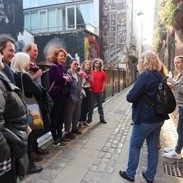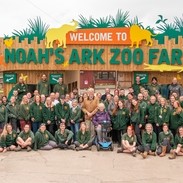Gathering the evidence
Existing information may come from:
• Evidence already collected by individual public and private stakeholders;
• Previous tourism/visitor economy plans, strategies and research;
• Plans and research for other topics and sectors, e.g. economic development, sport/recreation or transport;
• Data available nationally or for a wider area, having considered its relevance and applicability.
2.1 Knowing the product
Destination Market Plans should be based on a sound knowledge and assessment of the destination’s assets that can drive and support the visitor economy.
Elements to include in product audits:
Tourism facilities |
|
Heritage and culture |
|
Landscape and countryside |
|
Built environment |
|
Access and transport |
|
Visitor services |
|
In addition to what is currently available in the destination, it is very important to be aware of:
- New development projects being constructed, planned or proposed;
- Neighbouring product, including major facilities and attractions, key strengths, new developments and initiatives, outside but close to the destination. These could be an asset (by driving visitors to stay in the destination) or constitute competition.
In recording and assessing all this product it is necessary to consider:
- Quantity – how much is there, of what type?
- Quality – is it good or poor? Is it accessible and sustainable?
- Distinctiveness – to what extent is it special to this destination?
- Change and threats – does it appear to be growing/improving or declining/ deteriorating, and are there any clear risks to its presence and quality?
2.2 Understanding current performance
Gain a clear picture of the volume and value of tourism in the destination and the performance of tourism businesses. Refer to the following sources for information:
- National data applied to the area of the destination:
- The Great Britain Tourism Survey, covering domestic overnight visitors, can supply data at a county, town and local authority level in the form of three-year rolling averages. Data from 2021 can be found at Great Britain domestic overnight tourism: latest results.
- Information from the Great Britain Day Visits Survey, covering domestic day trips, is available at a county, town and local authority level. Find recent data at Great Britain domestic day trips: latest results.
- The International Passenger Survey outputs data on overseas visitors for counties and many towns in England. Data from 2022 is available. For smaller destinations we advise using three-year averages.
- Local economic impact: Commercial models on the performance and impact of tourism are used by many destinations.
- Annual information on visitor volumes at key sites.
- Surveys of businesses and visitors in the destination: Businesses can provide information on current and recent performance.
- Third party data sources such as mobile, spending, online customer journey can be helpful in determining current consumer behaviour in the destination.
2.3 Listening to visitors
Destination Management Plans should be market-based and fully informed by a knowledge of visitors and their experiences. Information required about visitors includes:
- Visitor profiles - origin, life stage, party make up, etc. Include reference to under-represented groups and those who aren’t visiting.
- Information on visit – previous visits, awareness of brand, specific purpose of visit, transport, information used, length of stay, spend
- Activities – places visited, use of services, activities undertaken
- Reaction to the destination and its components – general and specific satisfaction/ dissatisfaction; recommendations.
In-depth market research will be helpful in informing the DMP. Focus groups, constructed to cover previous and potential visitors and different market segments, can provide highly valuable insights into destination awareness, reactions, expectations and factors affecting decision making.
2.4 Understanding businesses
Destination Management Plans should give high priority to the performance and impact of tourism businesses and should therefore be based on a clear understanding of their needs. Encourage businesses to recognise that destination management is about delivering quality experiences for visitors, as well as addressing the needs of enterprise and the local area in a range of ways, rather than simply promotion. Information required about businesses includes:
- Nature of the business – size, employment, management, network, etc.;
- Level of performance – patterns of use, unfilled capacity;
- Markets served and observed market trends and needs;
- Investment intentions and issues;
- Barriers to successful performance, investment and growth;
- Support required - e.g. training needs, marketing;
- Assessment of current destination management – what aspects are most important to them, what aspects are delivered well, what elements can be improved;
- Engagement and communication with the destination – how could this be improved;
- Overall key issues concerning the destination that should be addressed.
Sources of information:
- Consultation with industry groups/associations;
- Face to face meetings with selected key and/or representative businesses;
- Questionnaire survey of all tourism businesses.
2.5 Identifying local issues
A further key requirement is to assess the range of possible local factors that could affect the context of the DMP moving forward. Issues may include:
- Local economic and political context for tourism development;
- Community awareness and reaction to tourism, as well as possible pressure on local services;
- Local environmental impacts of tourism, including pressure on finite resources;
- Ongoing or proposed projects and initiatives in related fields;
- Transport and other access issues to and within the destination;
- Generally perceived opportunities and threats;
- The relationship to other sectors, such as economic linkages through the supply chain.
Sources of information:
- Local policies and strategies;
- Direct consultation with a range of local authority departments and civil society bodies;
- Community consultation;
- Direct surveys of residents.
2.6 Reflecting external trends
Future opportunities will depend as much on the external environment, in the UK and internationally, as on the situation within the destination. Relevant information to be aware of includes:
- General economic, social and environmental trends that may influence tourism’s performance in the medium term;
- Tourism market trends, including domestic and incoming;
- Any forecasting specifically on tourism;
- Tourism product trends;
- Trends in technology and its use.
VisitBritain publishes a range of useful resources on tourism and wider trends.
2.7 Assessing the destination’s competitor set
In gathering evidence for the DMP, it can be instructive to observe what other destinations are offering and their approach to tourism. This can help with:
- Benchmarking your destination against others, helping shape your aspirations to become a market leader;
- Being aware of current standards to be met or surpassed;
- Understanding the relative strengths and weaknesses of the destination and what makes it distinctive;
- Learning and finding ideas from a new perspective;
- Thinking about what could be done differently to generate new tourism, rather than only displacing it from elsewhere;
- Considering possible future linkages and collaboration.







